Why living room design matters
Your living room is where most of your home life happens. It’s where guests get judged (nicely), where you relax, and where your style shows up. Good living room design makes the space feel useful, calm, and inviting. It doesn’t have to be expensive. Small changes often make the biggest difference.
How to use this guide
This article walks through the latest living room design trends. Each section gives clear, practical tips you can try right away. Want just one quick win? Read the “How to Start Your Living Room Makeover Today” section near the end.
Layout & Space Planning
Open concept vs. cosy corners
Open layouts feel airy. They fit modern life and let light flow. Cosy corners feel intimate. They’re perfect for reading nooks and TV nights. Which one should you choose? Think about how you use the room. Big family gatherings? Open plan. Quiet evenings? Carve out a corner.
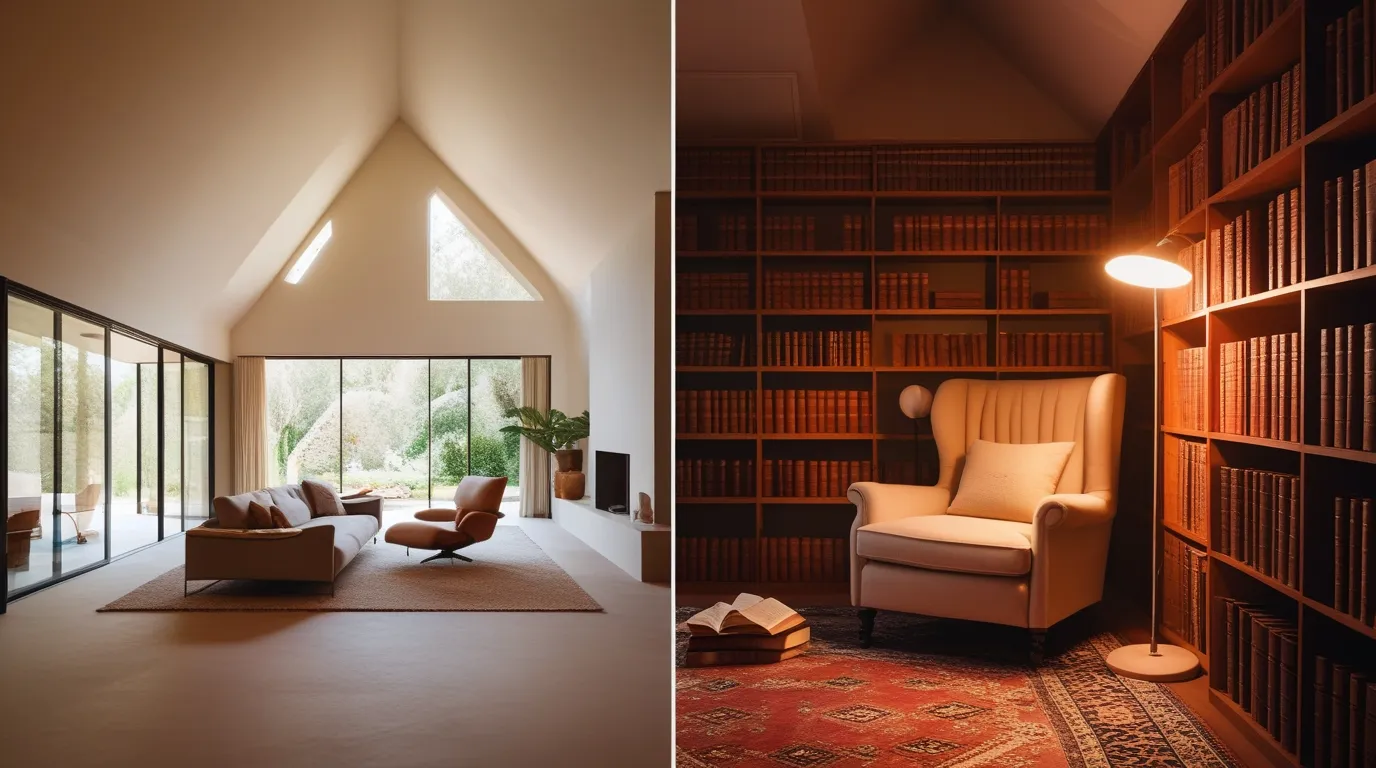
Traffic flow and furniture placement
Leave clear paths. A rule of thumb: keep at least 30–36 inches for main walkways. Avoid blocking doorways. Arrange seating so people face each other. That invites conversation. Floating furniture (away from walls) can create a better flow in larger rooms.
Anchor pieces and conversation zones
Use a rug or sofa to anchor a seating area. Create zones: TV space, reading nook, and a small workspace if you need one. Zones help a room do more without feeling messy.
Furniture Choices that Define a Living Room
Sofas, sectionals, and scale
Pick furniture that fits the room, not just your wish list. Big sofas swallow small rooms. Slimline designs work in tight spaces. Sectionals are great for open layouts and families. Measure first. Always.
Multipurpose and modular pieces
Modular sofas and storage ottomans are practical. They adapt as your needs change. Look for pieces with hidden storage to keep clutter out of sight. This keeps the living room looking calm and modern.
Colour Schemes & Palettes for a Modern Look
Neutral bases vs. bold accents
A neutral base gives you flexibility. Whites, beiges, and soft greys work well. Then add bold accents: a teal pillow, a burnt-orange chair, or a dark green rug. Accents can be changed seasonally without redesigning the whole room.
How to choose a palette that lasts
Pick one main neutral, one secondary neutral, and one accent colour. That trio keeps the room cohesive. If you like trends, use them in small doses—like a lamp or throw. That way, the core of the room stays timeless.
Lighting Design: Make the Room Glow
Layered lighting: ambient, task, accent
Good living room design uses three layers of light. Ambient light gives general brightness. Task lighting helps with reading or hobbies. Accent lighting highlights art or architecture. Layering makes the room flexible.
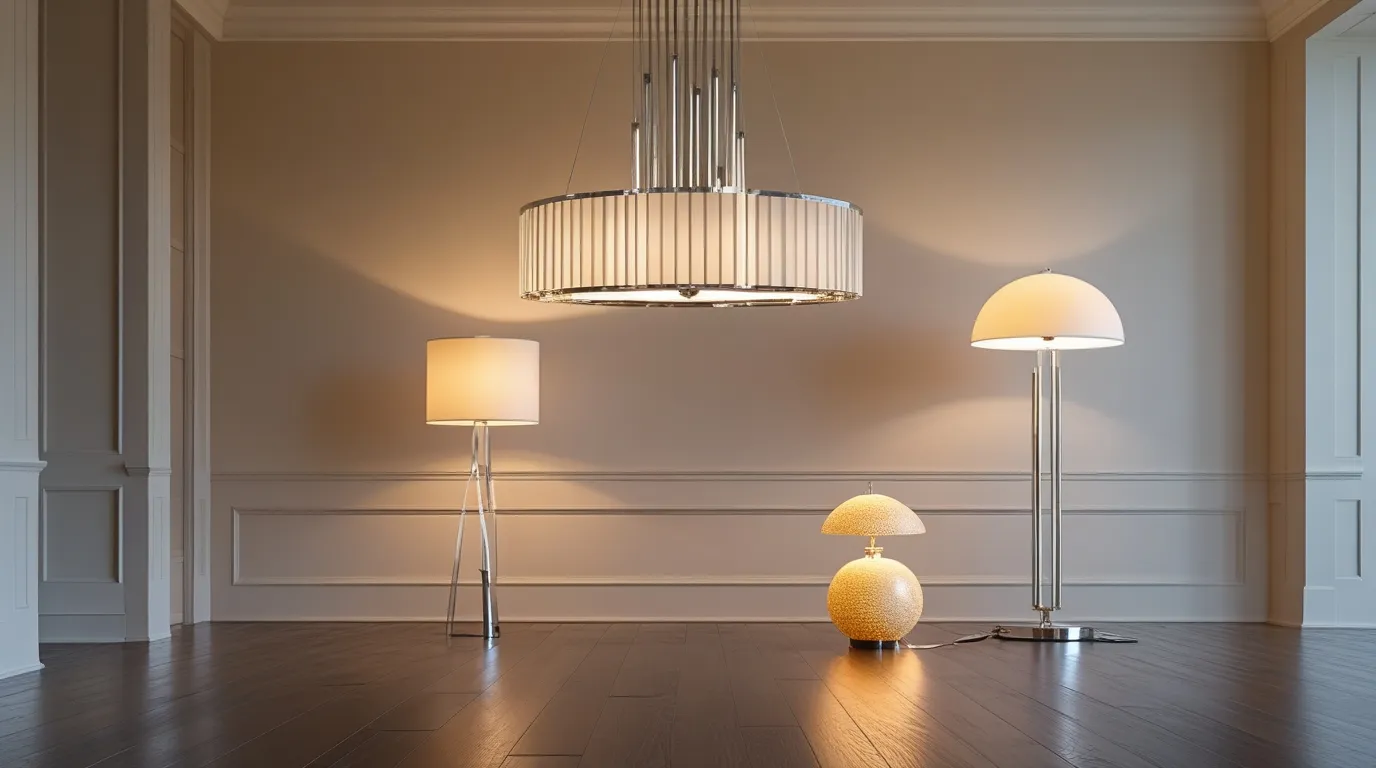
Statement fixtures without clutter
A bold pendant or chandelier can lift a simple room. Keep other elements simple so the fixture stands out. For modern rooms, matte metals and organic shapes are trending.
Textures & Materials to Add Depth
Mixing wood, metal, glass, and textiles
Combine hard and soft surfaces. Wood adds warmth. Metal adds edge. Glass keeps things light. Textiles — throws, pillows, rugs — bring comfort. Vary textures to avoid a flat look.
Rugs and curtains that ground the space
A good rug anchors furniture. Pick a rug size that fits under key pieces. Curtains frame windows and add height. Hang curtains close to the ceiling to make the room feel taller.
Decor & Accessories: Personal, Not Cluttered
Art, mirrors, and gallery walls
Art tells a story. A single large piece can be as effective as a gallery wall. Mirrors reflect light and make the room feel larger. Arrange art at eye level and keep a consistent spacing for a neat look.
Styling shelves and surfaces
Group items in threes or fives. Mix books with objects and small plants. Empty space matters. Don’t feel you must fill every surface. Let the eye rest.
Technology & Smart Living Rooms
Hidden tech and clean media centres
Today’s living room design hides cables and tech clutter. Mount the TV or choose slim cabinets with built-in cable management. A minimalist media console helps the room feel calm.
Smart lighting and voice control
Smart bulbs and voice assistants make daily life easier. Use smart lighting to create scenes—movie night, reading, or dinner. But keep controls simple for everyone in the home.
Budget-Friendly Design Tips
High/low swaps
Spend on what matters: sofa quality and lighting. Save on accessories and small décor. A high-quality sofa lasts longer than a trend piece.
DIY projects that look pro
Paint an accent wall. Reupholster cushions. Swap out old knobs on cabinets. Small DIY projects can refresh a room without a big budget.
Trending Living Room Styles
Scandi: clean and cosy
Think pale wood, soft textiles, and simple lines. Scandi is about function and calm.
Mid-century modern: iconic shapes
Tapered legs, warm woods, and sleek forms define this style. It mixes well with modern pieces.
Modern farmhouse: warm and lived-in
Combine rustic wood with simple lines. It feels cosy without being cluttered.
Boho: layered and eclectic
Boho uses patterns, plants, and global finds. Keep it intentional to avoid a messy look.
How to pick a style that fits you
Don’t force a style. Choose elements that match your life. If you host often, pick durable fabrics. If you love calm spaces, keep the palette muted.
Eco-Friendly Living Room Design
Sustainable materials and secondhand finds
Look for FSC-certified wood, low-VOC paints, and natural fibres like cotton and wool. Thrift stores and vintage markets are great for unique, eco-friendly pieces.
Energy-saving choices
LED bulbs, efficient windows, and smart thermostats reduce energy use. Small choices add up both for the planet and your bills.
Common Mistakes to Avoid
Overcrowding and wrong scale
Too many pieces make a room feel smaller. Use larger items with purpose. A single large sofa can work better than several small chairs.
Ignoring lighting and traffic
A bright room with easy flow feels more welcoming than a perfectly styled but dark room. Prioritise light and clear paths.
Final Touches for a Cohesive Look
Layer patterns and textures
Mix subtle and bold patterns. Keep colours in the same family to avoid chaos. A textured throw or woven basket adds life.
Balance comfort and style
Style is useless if you can’t sit down. Choose cushions and fabrics you like to touch. Comfort keeps people in the room longer.
Before & After Inspiration
Simple swaps with big impact
Replace tiny rugs with a single larger rug. Swap dated lamps for modern fixtures. These changes are cheap and dramatic.
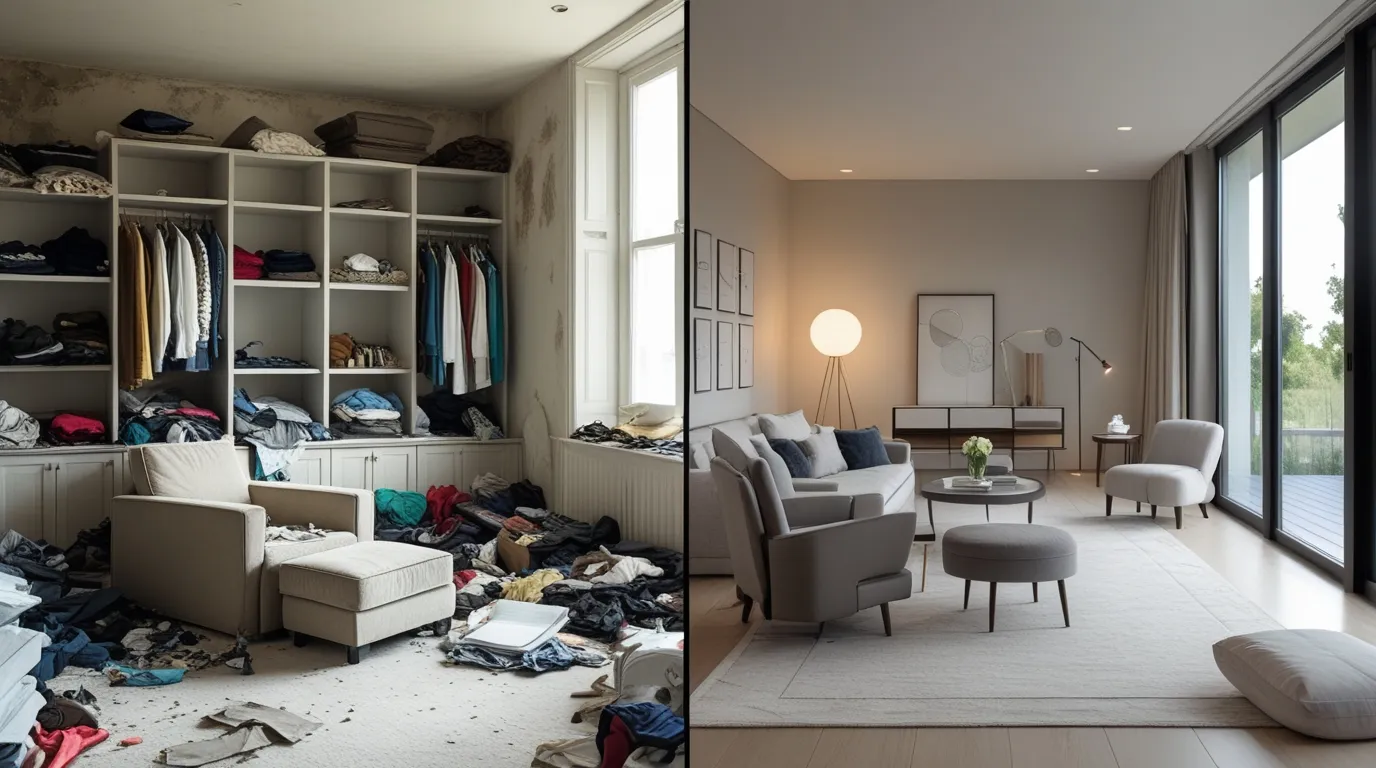
Real-life mini makeovers
Update cushion covers, add a new coffee table book, or move furniture for a new view. Small edits often feel like a full redesign.
How to Start Your Living Room Makeover Today
A simple 5-step plan
- Measure and assess. Note traffic paths and window positions.
- Pick a focal point. TV wall, fireplace, or large window.
- Choose a palette. One neutral base, one secondary, one accent.
- Select anchor pieces. Sofa, rug, and main light fixture.
- Add layers. Lighting, art, textiles, and accessories.
This plan keeps the project manageable. Tackle one step a weekend if you like.
Final Thoughts on Modern Living Room Design
Modern living room design blends comfort with simple form. It’s about making the room work for you. Focus on layout first, then pick quality anchor pieces. Add texture, good lighting, and a small splash of trend. You don’t need a big budget. Thoughtful choices and a few smart swaps will refresh the space. Start small. A calm, stylish living room is within reach.
Frequently Asked Questions
Q1: How do I choose the right rug size for my living room design?
Choose a rug that fits under the front legs of your main seating. For smaller rooms, a rug that leaves 12–18 inches of floor around the edges works well. In large rooms, aim for enough rug to anchor the whole seating area.
Q2: What paint colours work best in modern living room design?
Soft neutrals—light grey, warm beige, and soft white—are safe. Pair them with one bold accent like deep blue or terracotta. Use accent colour on pillows, art, or a single wall.
Q3: Is a sectional better than a sofa for a modern living room?
Sectionals are great for larger or open rooms and for families who lounge a lot. A sofa is better for smaller spaces or for a cleaner, more formal look. Measure your space and think about how you use it before choosing.
Q4: How can I make my living room look bigger?
Use light colours, add mirrors, keep furniture proportionate, and clear clutter. Choose legs-on furniture to show more floor. Hang curtains high to add height.
Q5: What are the most durable fabrics for family-friendly living rooms?
Look for performance fabrics like microfiber or tightly woven blends. Leather is durable and ages well. Indoor-outdoor fabrics also handle stains and wear. Always check cleaning instructions before buying.

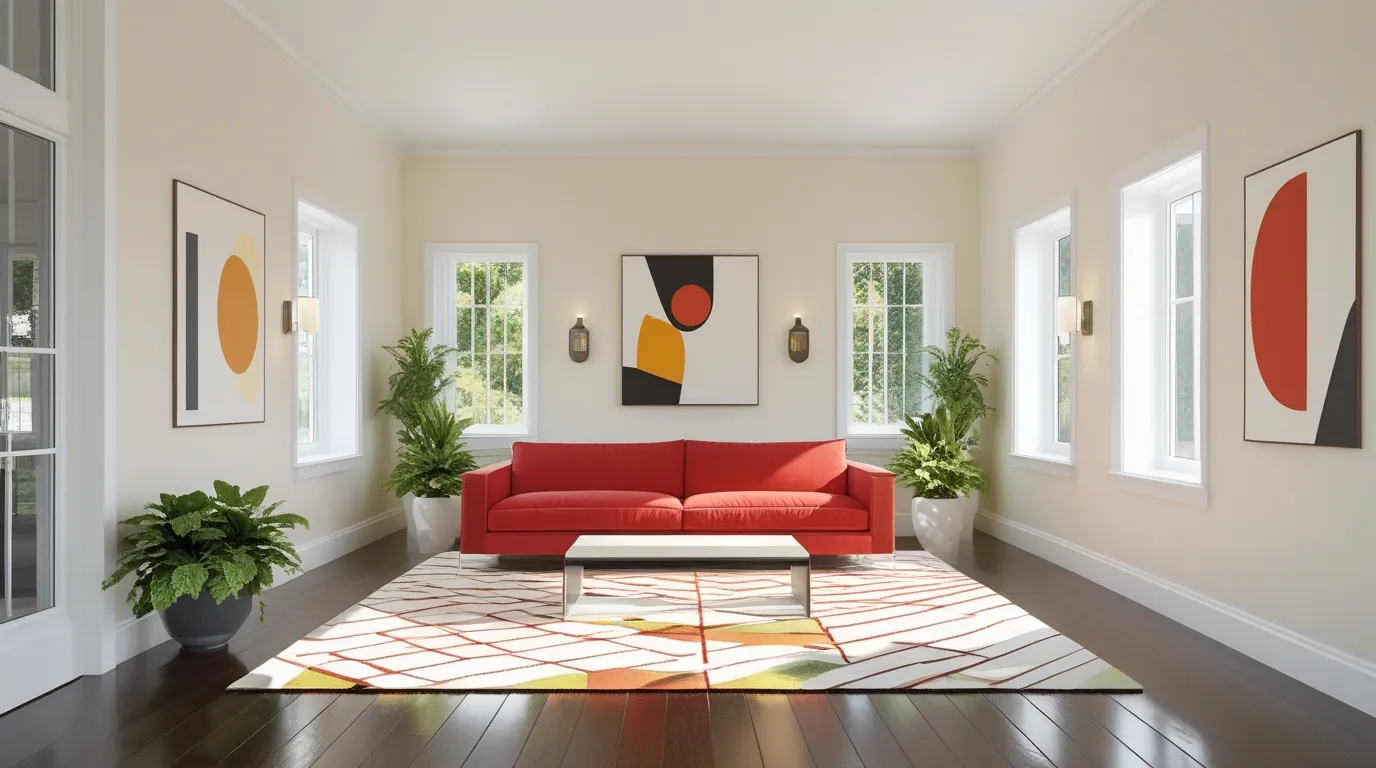
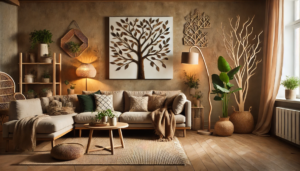
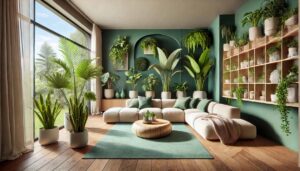
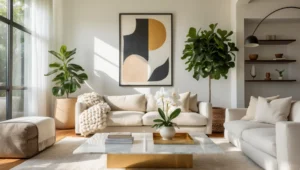
Pingback: Stunning Home Interior Decoration Ideas for Your Wedding Day - homesweetplace.com